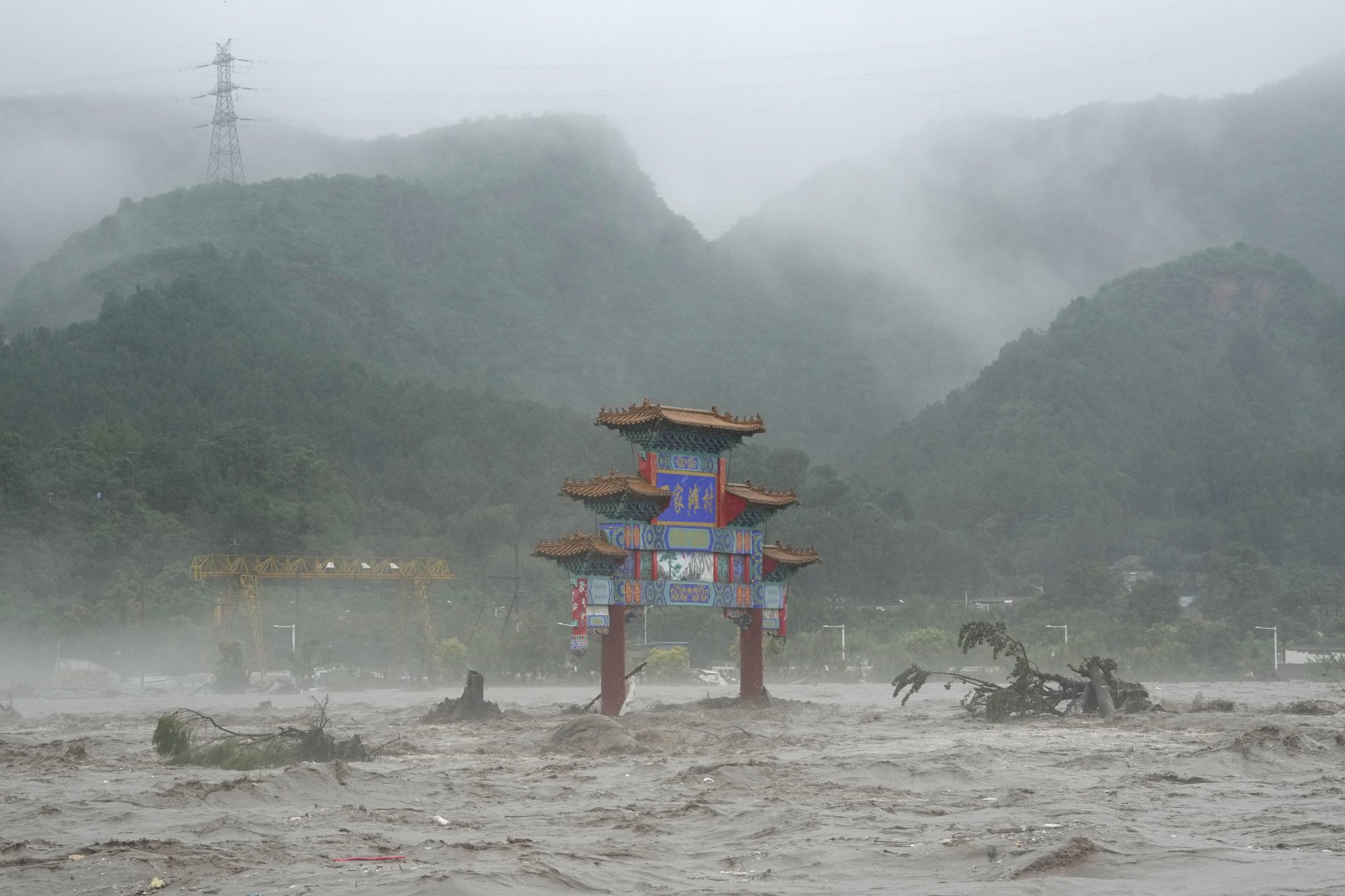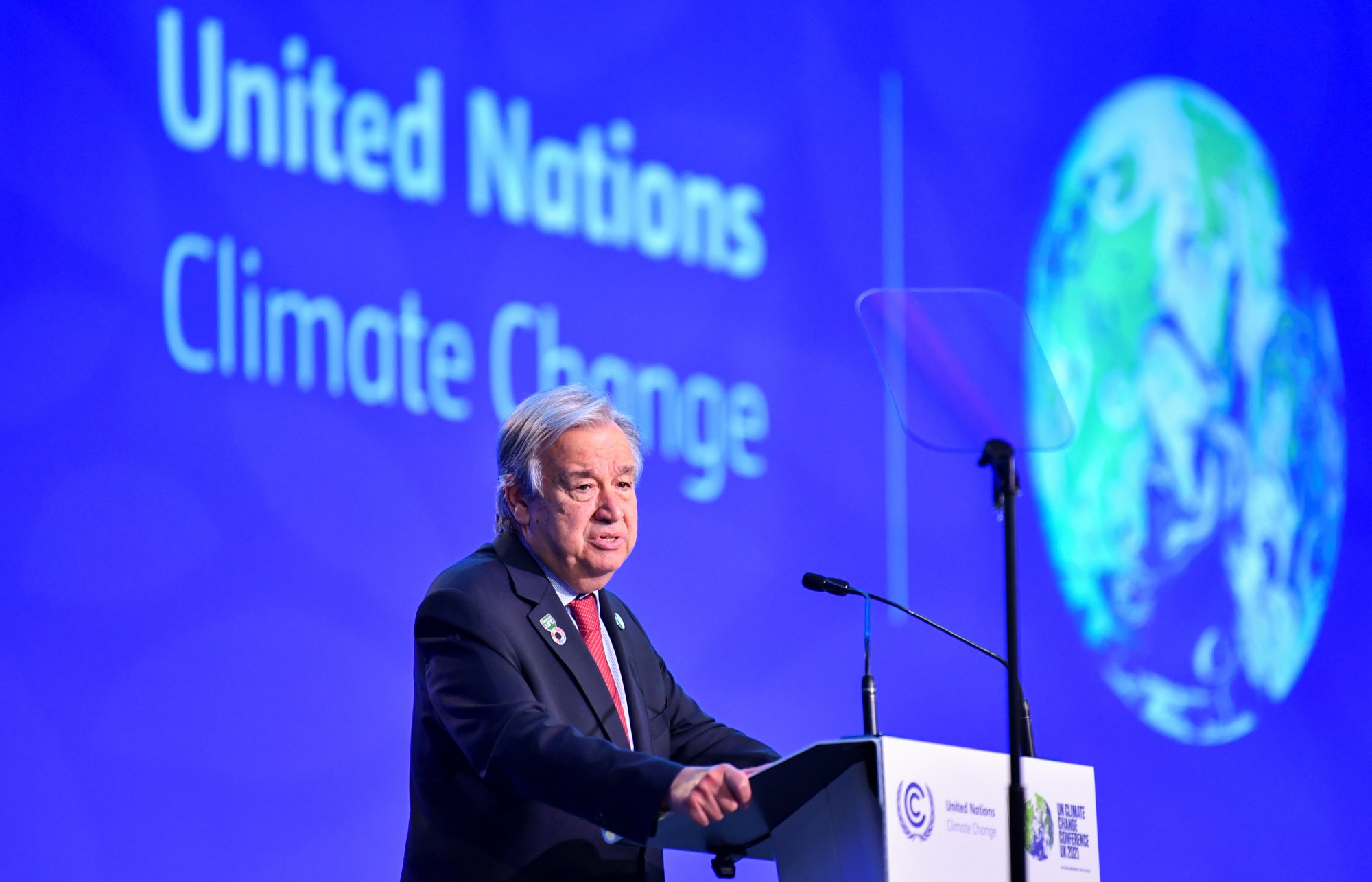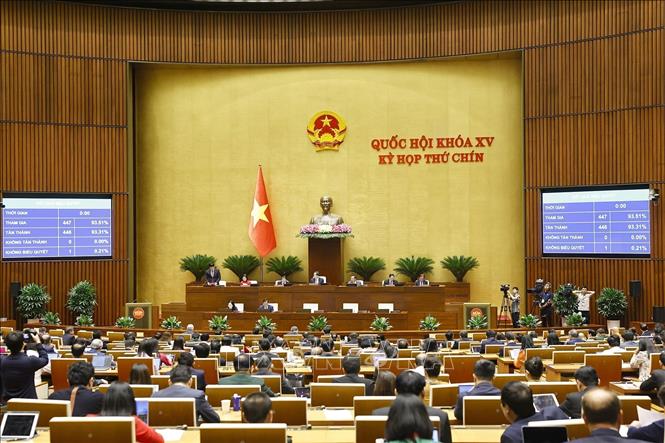“Red warning” for humanity
Ahead of the COP28 climate summit in Dubai (UAE) from November 30 to December 12 this year, the United Nations has warned that the world is on track for “catastrophic” warming, with global temperatures expected to rise by 3 degrees Celsius.
Specifically, the United Nations Environment Programme (UNEP)'s "Annual Emissions Gap Report" predicts that 2024 will be the hottest year in human history, and says: "The world is witnessing a worrying increase in the number, speed and scale of broken climate records."

A taxi driver in India cools off at noon, the intense heat this summer in India has killed hundreds of people. Photo: AFP
Taking into account countries’ carbon-cutting plans, UNEP warns that the planet is on track to “catastrophically” warm between 2.5°C and 2.9°C by 2100. Based on current policies and emissions-cutting efforts alone, global warming could reach 3°C.
Thus, the goal of keeping the Earth's temperature rise by 2100 to no more than 2°C above pre-industrial levels, and ideally no more than 1.5°C, agreed by the international community in the Paris Climate Agreement in 2015, has become almost impossible. With the current temperature increase, which the United Nations describes as "terrible", natural disasters and catastrophes are something that humanity will have to face more in the coming time.
“There is no person or economy on this planet that is immune to climate change, so we need to stop setting unwanted records on emissions, temperatures and extreme weather,” said Inger Andersen, UNEP executive director. Meanwhile, UN Secretary-General Antonio Guterres has repeatedly said that the world is heading towards a “hellish” future with the current climate crisis.
Sad records
In fact, it didn’t take the recent warnings from the United Nations for humanity to realize the consequences of climate change. The year 2023 was a year in which the world witnessed a series of catastrophic natural disasters and extreme climate records were broken one after another.
From Asia to Europe, people have just experienced a summer of extreme heat, or rather, the hottest in… 200 years. April and May are usually the hottest months of the year in Southeast Asia. But this year, the heat has reached unprecedented levels in most countries in the region.
Thailand saw its hottest day on record at 45.4°C on April 15, while neighboring Laos had a high of 43.5°C for two consecutive days in May. And Vietnam's all-time record was broken in May with 44.2°C.

Heavy rains caused floods in many Chinese cities in August this year. Photo: NBC
Seasonal record high temperatures were also recorded in China and South Asian countries such as India and Bangladesh. In China, Shanghai experienced its hottest May day (36.1°C) in more than a century on May 29. A day later, a weather station in the southeastern tech manufacturing hub of Shenzhen recorded a May record of 40.2°C. The scorching heat in India in June this year also killed nearly 100 people in the most populous states of Bihar and Uttar Pradesh alone.
In Europe, the European Union's climate change monitoring agency Copernicus said that the summer of 2023 was the hottest on record. The three-month period from June to August broke previous records, with an average temperature of 16.8°C, 0.66°C higher than the average. Southern European countries, especially Italy, Greece and Spain, have seen consecutive temperature records. In Sicily, Italy, the temperature reached 48.8°C (on August 11), breaking the 48°C mark set not long before in the Greek capital Athens.
The heat has sparked wildfires that have destroyed tens of thousands of hectares of forest in Greece and Spain, leaving thousands homeless and wiping out tens of billions of dollars from the economies of these countries. Wildfires are also a nightmare for Hawaiians, as nearly 100 people died in a catastrophic wildfire in August that burned down more than 850 hectares of land, trees, and homes on the resort island. Here, there are fires, there are floods, all because of climate change and global warming.
Time waits for no one
The above evidence will likely continue and increase in intensity in the article on this topic in the next Tet issue. The reason for saying so is that while climate change is getting worse, the world economy is being negatively impacted by the pandemic as well as conflicts, causing the international community to increasingly lose steam in achieving the goal of limiting temperature increase to 1.5 degrees Celsius.
To meet the 1.5C target set by the 2015 Paris Climate Agreement, 22 billion tonnes of CO2 must be cut by 2030 compared to current projections, the UNEP report said. That is 42% of global emissions and equivalent to the combined output of the world’s five worst polluters: China, the US, India, Russia and Japan.

United Nations Secretary-General Antonio Guterres has repeatedly called on countries to step up efforts to combat climate change. Photo: Reuters
According to UNEP, if all countries’ long-term pledges to cut emissions to zero by around 2050 are met, global temperature increases could be limited to 2°C. However, UNEP concluded that these net zero emissions pledges “are not currently considered credible.” The report said that none of the G20 countries, which together account for 80% of CO2 emissions, were reducing their emissions at a pace consistent with their “zero carbon” target.
Indeed, for leaders around the world, balancing the goal of promoting growth to help the economy recover from the pandemic years, while reducing emissions to zero is an extremely difficult problem to solve. Because the transition from fossil fuels, which have long been the lifeblood of economies, to green energy requires not only time but also huge investments and smart political moves. The financial resources needed for energy transition and climate change in developing countries are estimated to be around 1.3 trillion USD in 2025 and will reach 2.4 trillion USD in 2030.
Meanwhile, Mother Nature waits for no one. The world continues to warm and natural disasters continue to befall humanity!
Quang Anh
Source




![[Photo] President Luong Cuong receives delegation of the Youth Committee of the Liberal Democratic Party of Japan](https://vstatic.vietnam.vn/vietnam/resource/IMAGE/2025/8/22/2632d7f5cf4f4a8e90ce5f5e1989194a)

![[Photo] President Luong Cuong attends special political-artistic television show "Golden Opportunity"](https://vstatic.vietnam.vn/vietnam/resource/IMAGE/2025/8/22/44ca13c28fa7476796f9aa3618ff74c4)
![[Photo] Prime Minister Pham Minh Chinh chairs the conference to review the 2024-2025 school year and deploy tasks for the 2025-2026 school year.](https://vstatic.vietnam.vn/vietnam/resource/IMAGE/2025/8/22/2ca5ed79ce6a46a1ac7706a42cefafae)

































































































Comment (0)